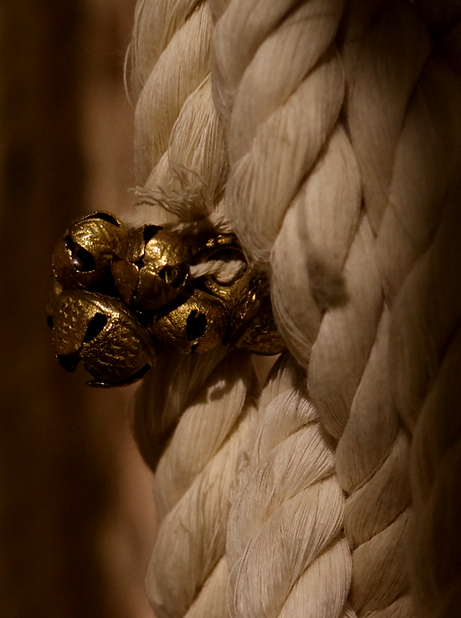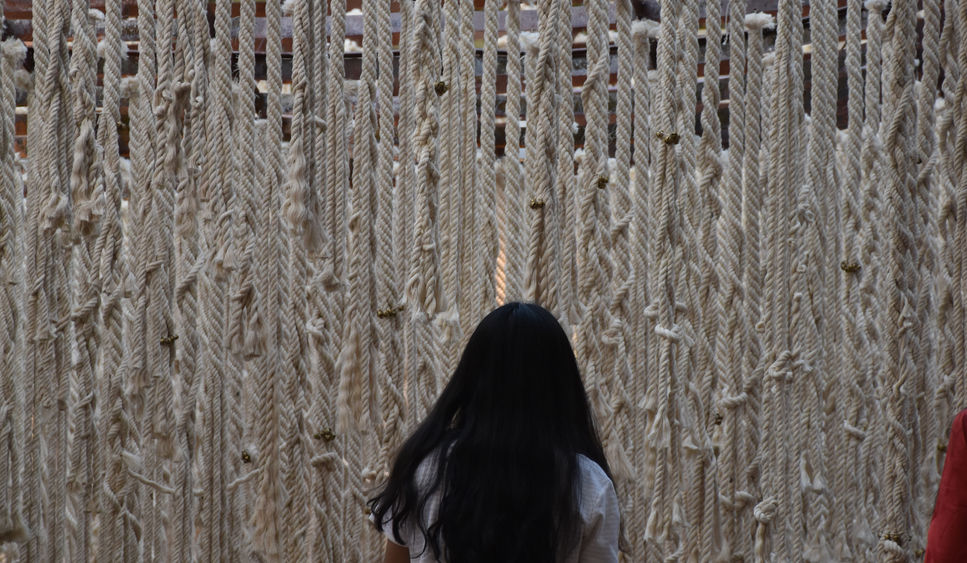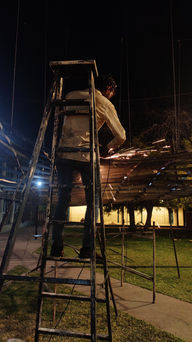Imaginarium | કલ્પતરુ
Ahmadabad, India \ અમદાવાદ, ભારત
2020

Clients: The City Arts Project, UNM Foundation, People of Ahmedabad
Curated by: Vyom Mehta
Collaborators/ Team: Prakhar, Anjali, Sreenidhi, Pranali, Garvi, Austin, Raman,
Lalit, Murtaza, artisans of Gulbai Tekra & Spacica Workshop
Location: Ahmedabad, India
Status: Built/ Deconstructed
Tags: innovation, indigenous, steel, alternate, culture, urban
Situated in Ahmedabad, this project serves as a juxtaposition between two realities of the World Heritage City - its modern history of communal violence in Gujarat 2002, countered by its broader cultural impact of non-violent protests based on Gandhian philosophy. As a spatial whole, it references how, during the era of India’s freedom struggle, the Sabarmati Ashram became an epicentre for the Swadeshi and Boycott Movements against British goods and colonial economies, by seizing the means of and decentralizing the production of cotton, through the symbolism of the Charkha.
Can an ethereal labyrinth float gently on thin air?
The Imaginarium is sculpted as a rhizomatic place, activated by collective interaction and mindfulness. Loosely inspired by the poetic literature of Edouard Glissant, it materialized as a relational experiment between the instability of bleeding-edge computational fabrication and traditional craft systems of the nomadic Baori people, from the Thar Desert.
From exercises in architectural form-finding, we zeroed in on the versatility of gridshells, which can take on diverse curved surfaces, particularly robust when built on flat ground. So we asked, would it remain stable when floating several feet off the datum? From the very onset, this was a project beset with several technical constraints. Usage of any nails, screws, or foundations were strictly prohibited by the authorities at the Consortium. If the heavy structure was to levitate magically in its large courtyard, it was to be first envisioned independent of columns or any other conventional structural system.


Interacting sense and sensibilities


For eons, trees have garnered mythic reverence across various cultures world over. Across the Indian subcontinent, Kalpataru or the Tree of Life has been a timeless metaphor for peace, wisdom and enlightenment, extolled in iconography and literature as the wish-fulfilling Divine Tree. In Gaya, the Bodhi-vriksha (બોધી વૃક્ષ) is an ancient banyan tree under which Siddhartha attained enlightenment to become the Buddha.

Close to the site, there was a similar mighty, old banyan tree whose aerial roots inspired a way to mitigate all the challenges posed by the context. A spatial counter-point to that banyan tree, the built pavilion becomes a symphony in data, music and light for people to inhabit, stumble upon and play the tiny fruits / shimmering echos of copper bells (ghungroos) all across its floating labyrinth.


























